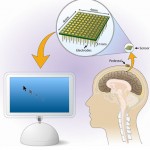Archive for 2009
Novel swing-assist un-motorized exoskeletons for gait training
- Тип контента: Научная статья
- Номер документа: 6347
- Название документа: Novel swing-assist un-motorized exoskeletons for gait training
- Номер (DOI, IBSN, Патент): 10.1186/1743-0003-6-24
- Изобретатель/автор: Kalyan K Mankala, Sai K Banala, Sunil K Agrawal
- Правопреемник/учебное заведение: University of Delaware
- Дата публикации документа: 2009-07-03
- Страна опубликовавшая документ: США
- Язык документа: Английский
- Наименование изделия: Не заполнено
- Источник: Journal of NeuroEngineering and Rehabilitation
- Вложения: Да
- Аналитик: Глаголева Елена
 Background: Robotics is emerging as a promising tool for functional training of human movement. Much of the research in this area over the last decade has focused on upper extremity orthotic devices. Some recent commercial designs proposed for the lower ex-tremity are powered and expensive – hence, these could have limited affordability by most clinics. In this paper, we present a no-vel un-motorized bilateral exoskeleton that can be used to assist in treadmill training of motorimpaired patients, such as with mo-tor-incomplete spinal cord injury. The exoskeleton is designed such that the human leg will have a desirable swing motion, once it is strapped to the exoskeleton. Since this exoskeleton is un-motorized, it can potentially be produced cheaply and could reduce the physical demand on therapists during treadmill training. Results: A swing-assist bilateral exoskeleton was designed and fabri-cated at the University of Delaware having the following salient features: (i) The design uses torsional springs at the hip and the knee joints to assist the swing motion. The springs get charged by the treadmill during stance phase of the leg and provide pro-pulsion forces to the leg during swing. (ii) The design of the exoskeleton uses simple dynamic models of sagittal plane walking, which are used to optimize the parameters of the springs so that the foot can clear the ground and have a desirable forward motion during walking. The bilateral exoskeleton was tested on a healthy subject during treadmill walking for a range of walking speeds between 1.0 mph and 4.0 mph. Joint encoders and interface force-torque sensors mounted on the exoskeleton were used to evaluate the effectiveness of the exoskeleton in terms of the hip and knee joint torques applied by the human during treadmill walking. Conclu-sion: We compared two different cases. In case 1, we estimated the torque applied by the human joints when walking with the device using the joint kinematic data and interface force-torque sensors. In case 2, we calculated the required torque to perform a simi-lar gait only using the kinematic data collected from joint motion sensors. On analysis, we found that at 2.0 mph, the device was effective in reducing the maximum hip torque requirement and the knee joint torque during the beginning of the swing. These behavi-ors were retained as the treadmill speed was changed between 1–4 mph. These results were remarkable considering the simplicity of the dynamic model, model uncertainty, non-ideal spring behavior, and friction in the joints. We believe that the results can be fur-ther improved in the future. Nevertheless, this promises to provide a useful and effective methodolgy for design of un-motorized exoskeletons to assist and train swing of motor-impaired patients.
Background: Robotics is emerging as a promising tool for functional training of human movement. Much of the research in this area over the last decade has focused on upper extremity orthotic devices. Some recent commercial designs proposed for the lower ex-tremity are powered and expensive – hence, these could have limited affordability by most clinics. In this paper, we present a no-vel un-motorized bilateral exoskeleton that can be used to assist in treadmill training of motorimpaired patients, such as with mo-tor-incomplete spinal cord injury. The exoskeleton is designed such that the human leg will have a desirable swing motion, once it is strapped to the exoskeleton. Since this exoskeleton is un-motorized, it can potentially be produced cheaply and could reduce the physical demand on therapists during treadmill training. Results: A swing-assist bilateral exoskeleton was designed and fabri-cated at the University of Delaware having the following salient features: (i) The design uses torsional springs at the hip and the knee joints to assist the swing motion. The springs get charged by the treadmill during stance phase of the leg and provide pro-pulsion forces to the leg during swing. (ii) The design of the exoskeleton uses simple dynamic models of sagittal plane walking, which are used to optimize the parameters of the springs so that the foot can clear the ground and have a desirable forward motion during walking. The bilateral exoskeleton was tested on a healthy subject during treadmill walking for a range of walking speeds between 1.0 mph and 4.0 mph. Joint encoders and interface force-torque sensors mounted on the exoskeleton were used to evaluate the effectiveness of the exoskeleton in terms of the hip and knee joint torques applied by the human during treadmill walking. Conclu-sion: We compared two different cases. In case 1, we estimated the torque applied by the human joints when walking with the device using the joint kinematic data and interface force-torque sensors. In case 2, we calculated the required torque to perform a simi-lar gait only using the kinematic data collected from joint motion sensors. On analysis, we found that at 2.0 mph, the device was effective in reducing the maximum hip torque requirement and the knee joint torque during the beginning of the swing. These behavi-ors were retained as the treadmill speed was changed between 1–4 mph. These results were remarkable considering the simplicity of the dynamic model, model uncertainty, non-ideal spring behavior, and friction in the joints. We believe that the results can be fur-ther improved in the future. Nevertheless, this promises to provide a useful and effective methodolgy for design of un-motorized exoskeletons to assist and train swing of motor-impaired patients.
Категория: Научные статьи | Нет комментариев »
Wearable motion assist device
- Тип контента: Патент
- Номер документа: 5011
- Название документа: Wearable motion assist device
- Номер (DOI, IBSN, Патент): WO2009081710
- Изобретатель/автор: Sankai, Y.
- Правопреемник/учебное заведение: Univ. of Tsukuba, Japan
- Дата публикации документа: 2009-07-02
- Страна опубликовавшая документ: Япония
- Язык документа: Японский
- Наименование изделия: Не заполнено
- Источник: http://www.wipo.int/patentscope/search/en/WO2009081710
- Вложения: Да
- Аналитик: Дмитрий Соловьев
 (EN)A motion assisting wearable frame (18A) has a waist fastening member (30) to be attached to the waist of a person (12), a right leg assist portion (54) provided downward from the right side portion of the waist fastening member (30), and a left leg assist portion (55) provided downward from the left side portion of the waist fastening member (30). A fitting portion (31) to be fitted to the backside at the waist of a person (12) with no clearance is fixed to the backside of the waist fastening member (30). The fitting portion (31) consists of a bag-shaped resin member formed in curved shape to cover the backside at the waist of the person (12). The fitting portion (31) is in deformable fluid state until it is attached to the person (12) under a state where the internal pressure is the atmospheric pressure. After it is attached to the person (12), the internal pressure is reduced so that the shape is varied in accordance with the figure of the person (12) at a portion abutting against backside at the waist.
(EN)A motion assisting wearable frame (18A) has a waist fastening member (30) to be attached to the waist of a person (12), a right leg assist portion (54) provided downward from the right side portion of the waist fastening member (30), and a left leg assist portion (55) provided downward from the left side portion of the waist fastening member (30). A fitting portion (31) to be fitted to the backside at the waist of a person (12) with no clearance is fixed to the backside of the waist fastening member (30). The fitting portion (31) consists of a bag-shaped resin member formed in curved shape to cover the backside at the waist of the person (12). The fitting portion (31) is in deformable fluid state until it is attached to the person (12) under a state where the internal pressure is the atmospheric pressure. After it is attached to the person (12), the internal pressure is reduced so that the shape is varied in accordance with the figure of the person (12) at a portion abutting against backside at the waist.
(далее…)
Категория: Патенты | Нет комментариев »
Upper-Limb Power-Assist Control for Agriculture Load Lifting
- Тип контента: Научная статья
- Номер документа: 6556
- Название документа: Upper-Limb Power-Assist Control for Agriculture Load Lifting
- Номер (DOI, IBSN, Патент): Не заполнено
- Изобретатель/автор: Eiichi Yagi, DaisukeHarada, Masaaki Kobayashi
- Правопреемник/учебное заведение: Faculty of Systems Engineering, Wakayama University
- Дата публикации документа: 2009-06-30
- Страна опубликовавшая документ: Япония
- Язык документа: Английский
- Наименование изделия: Не заполнено
- Источник: Int. J. of Automation TechnologyVol.3No.6, 2009
- Вложения: Да
- Аналитик: Глаголева Елена
 This paper discusses upper-limb power-assist control using a pneumatic rotary actuator to support shoulder movement and an air cylinder to support elbow move-ment by agricultural workers lifting a 30 kg rice bag without inducing low back pain. Surface electro-myogram (EMG) signals are used as trigger signals, joint support torque is calculated based on the antigra-vity term of necessary joint torque, estimated based on the dynamics of a human approximated link model. Experimental results demonstrate the effectiveness of proposed power-assist control.
This paper discusses upper-limb power-assist control using a pneumatic rotary actuator to support shoulder movement and an air cylinder to support elbow move-ment by agricultural workers lifting a 30 kg rice bag without inducing low back pain. Surface electro-myogram (EMG) signals are used as trigger signals, joint support torque is calculated based on the antigra-vity term of necessary joint torque, estimated based on the dynamics of a human approximated link model. Experimental results demonstrate the effectiveness of proposed power-assist control.
Категория: Научные статьи | Нет комментариев »
A two-degree-of-freedom hip exoskeleton device for an immature animal model of exercise-induced Legg–Calve´–Perthes disease
- Тип контента: Научная статья
- Номер документа: 6211
- Название документа: A two-degree-of-freedom hip exoskeleton device for an immature animal model of exercise-induced Legg–Calve´–Perthes disease
- Номер (DOI, IBSN, Патент): 10.1243/09544119JEIM597
- Изобретатель/автор: Z-S Xu, Y Chen, T Wu, J-H Li, J-F Zhang, C-J Yang
- Правопреемник/учебное заведение: Zhejiang University
- Дата публикации документа: 2009-06-29
- Страна опубликовавшая документ: Китай
- Язык документа: Английский
- Наименование изделия: Не заполнено
- Источник: Journal of Engineering in Medicine
- Вложения: Да
- Аналитик: Глаголева Елена
 Legg–Calve´–Perthes disease (LCPD) is a significant problem in healthcare because it so commonly affects young adults and immature athletes, primarily gymnasts. In this paper, a two-degree-of-freedom (2-DOF) hip exoskeleton device was developed for study on an immature animal model of exercise-induced LCPD. The exoskeleton device can reproduce the repetitive actions and forceful centrality impingements on the coxafemoral head that occur in sports such as gymnastics and acrobatics. It initiated a new method rather than the traditional medical or physiological operation method to establish an animal model of LCPD and allowed for the development and testing of new treatments. Ten immature New Zealand white rabbits were selected for the experiment. Their right legs were driven to achieve repetitive extension/flexion and abduction/adduction beyond the normal range of motion, with centrality impingements at the maximum flexion position, while their left legs were kept in the initial healthy status and acted as the comparing reference. Four weeks later, the basic symptoms of early LCPD of the femoral head appeared. The results of X-ray, magnetic resonance imaging (MRI), gross anatomy observation, and H-E section also revealed it.
Legg–Calve´–Perthes disease (LCPD) is a significant problem in healthcare because it so commonly affects young adults and immature athletes, primarily gymnasts. In this paper, a two-degree-of-freedom (2-DOF) hip exoskeleton device was developed for study on an immature animal model of exercise-induced LCPD. The exoskeleton device can reproduce the repetitive actions and forceful centrality impingements on the coxafemoral head that occur in sports such as gymnastics and acrobatics. It initiated a new method rather than the traditional medical or physiological operation method to establish an animal model of LCPD and allowed for the development and testing of new treatments. Ten immature New Zealand white rabbits were selected for the experiment. Their right legs were driven to achieve repetitive extension/flexion and abduction/adduction beyond the normal range of motion, with centrality impingements at the maximum flexion position, while their left legs were kept in the initial healthy status and acted as the comparing reference. Four weeks later, the basic symptoms of early LCPD of the femoral head appeared. The results of X-ray, magnetic resonance imaging (MRI), gross anatomy observation, and H-E section also revealed it.
Категория: Научные статьи | Нет комментариев »
Нейроинтерфейс BrainGate — руки и ноги заменит мозг.
- Тип контента: Новостная статья
- Номер документа: 4897
- Название документа: Нейроинтерфейс BrainGate - руки и ноги заменит мозг.
- Номер (DOI, IBSN, Патент): Не заполнено
- Изобретатель/автор: Не заполнено
- Правопреемник/учебное заведение: Не заполнено
- Дата публикации документа: 2009-06-28
- Страна опубликовавшая документ: Россия
- Язык документа: Русский
- Наименование изделия: Не заполнено
- Источник: http://www.3dnews.ru/editorial/it_braingate
- Вложения: Не заполнено
- Аналитик: Helix
 Какие первые мысленные ассоциации вызывает у вас упоминание о компьютерном интерфейсе, управляемом непосредственно мозгом? Лично у меня первым делом в памяти всплывают всевозможные киборги, так красочно описанные Голливудом в многочисленных фантастических боевиках и ужастиках.
Какие первые мысленные ассоциации вызывает у вас упоминание о компьютерном интерфейсе, управляемом непосредственно мозгом? Лично у меня первым делом в памяти всплывают всевозможные киборги, так красочно описанные Голливудом в многочисленных фантастических боевиках и ужастиках.
Категория: Управление | Нет комментариев »
Статистика
Категорий: 179
Статей всего: 2,003
По типу:
Видео: 36
Выдержка с форума: 1
Контактные данные: 12
Научная статья: 1388
Не заполнено: 5
Новостная статья: 317
Обзор технологии: 42
Патент: 219
Тех.подробности: 34
Тип: 1
Комментариев: 8,690
Изображений: 3,005
Подробней...
ТОР 10 аналитиков
-
Глаголева Елена - 591
Дмитрий Соловьев - 459
Helix - 218
Ридна Украина))) - 85
Наталья Черкасова - 81
max-orduan - 29
Елена Токай - 15
Роман Михайлов - 9
Мансур Жигануров - 4
Дуванова Татьяна - 3
Календарь
| Пн | Вт | Ср | Чт | Пт | Сб | Вс |
|---|---|---|---|---|---|---|
| « Ноя | ||||||
| 1 | 2 | 3 | 4 | 5 | ||
| 6 | 7 | 8 | 9 | 10 | 11 | 12 |
| 13 | 14 | 15 | 16 | 17 | 18 | 19 |
| 20 | 21 | 22 | 23 | 24 | 25 | 26 |
| 27 | 28 | 29 | 30 | 31 | ||
Авторизация
Ошибка в тексте?
Выдели её мышкой!
И нажми Ctrl+Enter